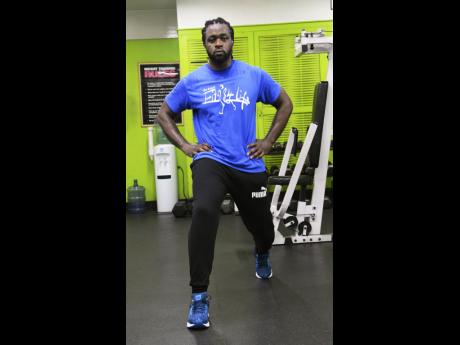Fit 4 Life | Don't skip leg day
Friends don't let friends skip leg day, and for good reason. Training legs is a key component of any fitness programme and ignoring them could be disastrous.
Whether you are trying to lose body fat, boost total-body strength and fitness, increase muscle mass, or enhance athletic performance, you should include the biggest muscles in your body - those found in the legs.
Balance is paramount when training legs, so try to include a variety of movements. While vertical (squat variations) and horizontal (lunge variations) drive movements are popular, many people ignore pulling movements such as deadlifts and bridges. This can lead to imbalances and injury.
Try out our bodyweight and dumb-bell leg routine designed to hit every muscle and tell us the results on Instagram, Facebook or Twitter using the hashtag #fit4lifeja.
BODY WEIGHT
Squat Jump - 20
Squat - 20
Wall Squat - 45s
Lateral Lunge - 10
Reverse Lunge - 10
Single-leg Deadlift - 10
Calf raise - 20
Do these times three. Keep rest times at one minute or less.
DUMB BELL
Squat Jump - 20
Dumb bell Squat - 20
Split Squat - 5
Lateral Lunges - 12
Dumb bell Lunge - 10
Dumb bell Stiff Leg Deadlift - 12
Dumb bell Calf Raise - 12
Do these times three.
WHY DO LEG WORK
Burn more fat
Trying to burn fat? It's common sense to use the biggest muscles in the body when you are trying to burn calories. But the fat-burning effect of leg training goes beyond that. Like most strength training, a leg workout also generates a big after-burn effect, keeping your metabolic rate high for hours after your workout.
Prevent lower back pain
Leg training can help you avoid the dreaded lower back pain. Back pain is often caused by weak stabilising muscles such as the glutes. Training your glutes, hip flexors, quadriceps, and hamstrings will reduce your risk of lower back injuries. Be careful when training, however, as improper form is likely to lead to the opposite: back pain and injury.
Sneak in some cardio
Leg exercise has the great secondary effect of taxing the cardiovascular system. This means that while working legs you also get some amount of cardio done.
Strengthen your core
Many lower body exercises are compound movements which engage multiple muscle groups. These exercises usually require heavy core activation to perform. This means that leg training will boost core strength and stability.
Boost overall performance
Whether you want to improve your athletic performance in sports, such as football or running, or you want to lift more weights in the gym, leg day should not be skipped.
Leg training boost core strength and stability and lower body strength is the foundation upon which most upper-body movements stand.
- Marvin Gordon is a fitness coach. Email: marvin.gordon@physiqueandfunction.com; yourhealth@gleanerjm.com





